Ian Bond remembers the moment he fell in love with a tree. “I grew up in Braemar, in the Highlands of Scotland, in a place where there were no deciduous trees,” he says. “When I was ten, I went to live in the south of England and there was a very beautiful tree outside my bedroom window. It was a walnut, Juglans regia, and that’s how it started.” Over the years, his fascination has grown and he is now the keeper of one of the UK’s National Collections of walnuts at Upton Wold, his Cotswold home, where 18 of the 21 Juglans species and around 180 cultivars are to be found, alongside all eight of the species (comprising another National Collection) of the related Pterocarya genus, commonly known as wingnuts. Discover more about the garden below.
In brief
What Varied Cotswold garden regularly open to the public. Where Gloucestershire. Soil Neutral loam. Size Around 14 acres. Climate Severe winters (-15ºC is not uncommon) due in part to the elevation at more than 200m. Hardiness zone USDA 8.
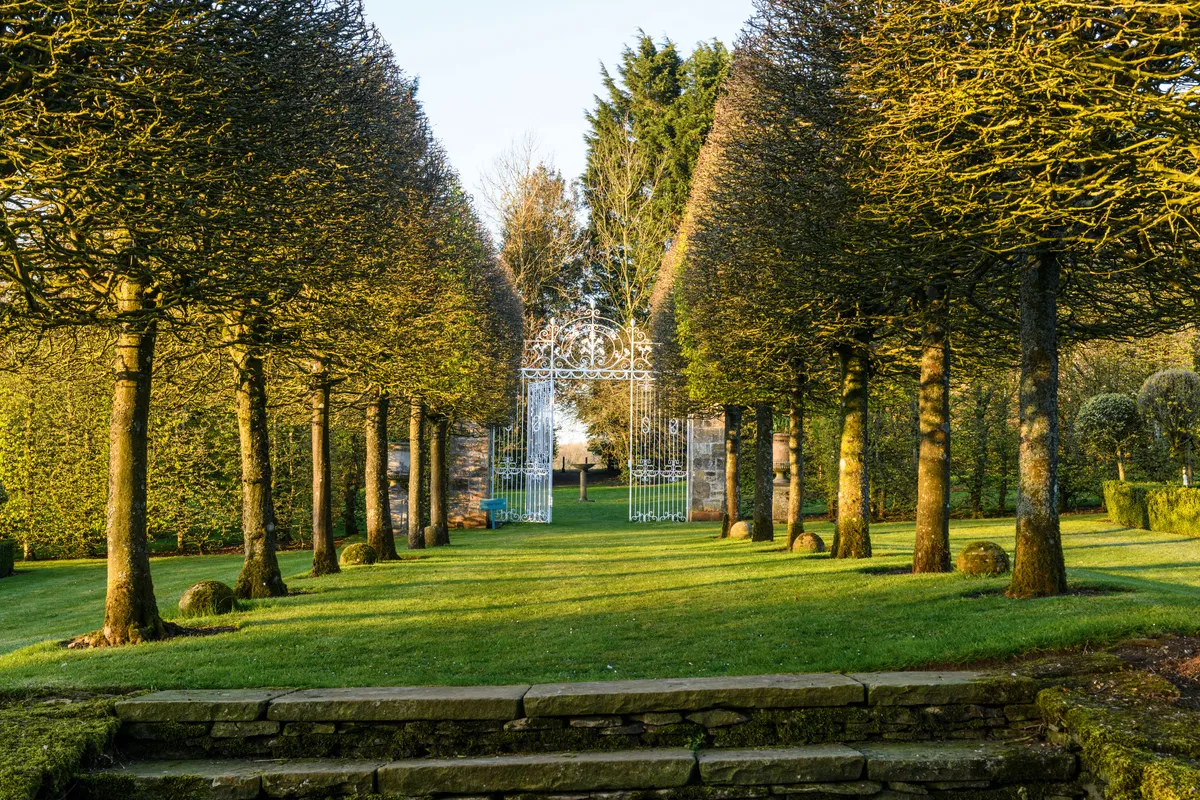
The pleached hornbeam walk was inspired by Caroline’s visits to Hidcote and leads on to the Daisy Lawn and the arboretum – home to Ian’s walnut collection – beyond. The ornate gates were originally black but, when they were being repainted one year, Caroline noticed the white primer stood out so much better, and they have remained white ever since.

To the other side of the hornbeam walk at the top of the garden is a white border and a large fruit cage, flanked by a dry-stone wall planted with swathes of Iris germanica – a ribbon of blue in June. An amelanchier and a fine pink Magnolia ‘Star Wars’ combine with Paeonia delavayi further along the border.
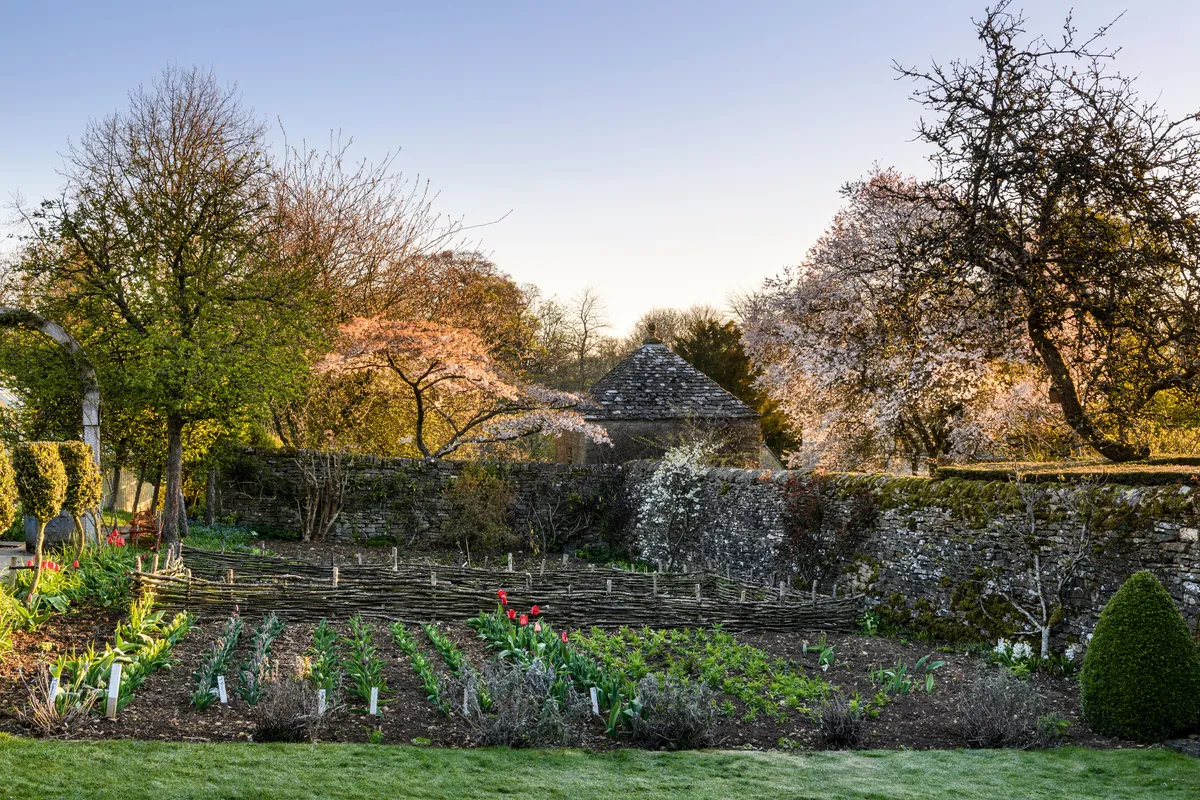
Part of the kitchen garden is used as a cutting garden with rows of tulips including Tulipa ‘Ballerina’, Tulipa ‘Purple Doll’ and Tulipa ‘West Point’ surrounding the asparagus bed, edged with willow hurdles to protect against marauding rabbits. Single cherries, including Prunus x yedoensis, combine well with the old lichen- and moss-covered dry-stone walls.
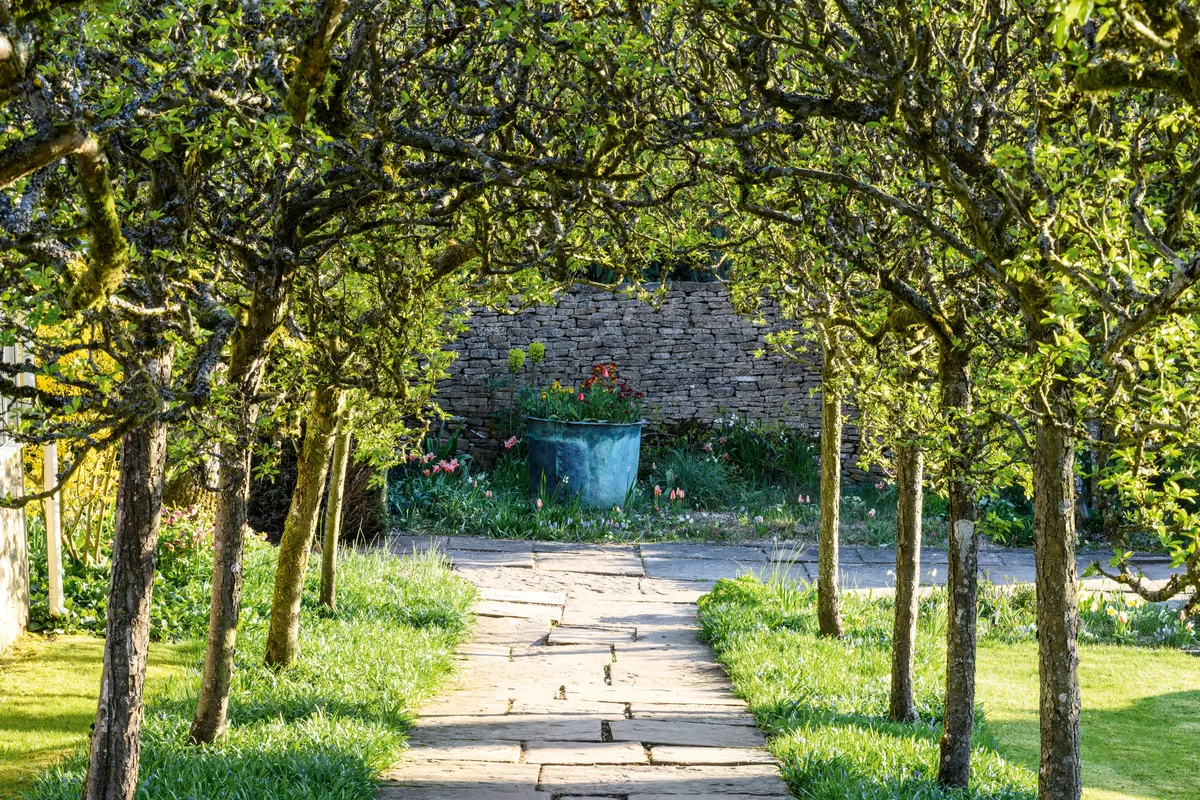
The walk of Malus ‘John Downie’ was planted in 1976, shortly after Ian and Caroline arrived at Upton Wold, and looks good all year round. In winter the mossy, gnarled branches form an interesting sculptural archway, followed by masses of white blossom in spring, fresh-green foliage in summer, and red and yellow crab apples in autumn. The trees are underplanted with Scilla siberica.
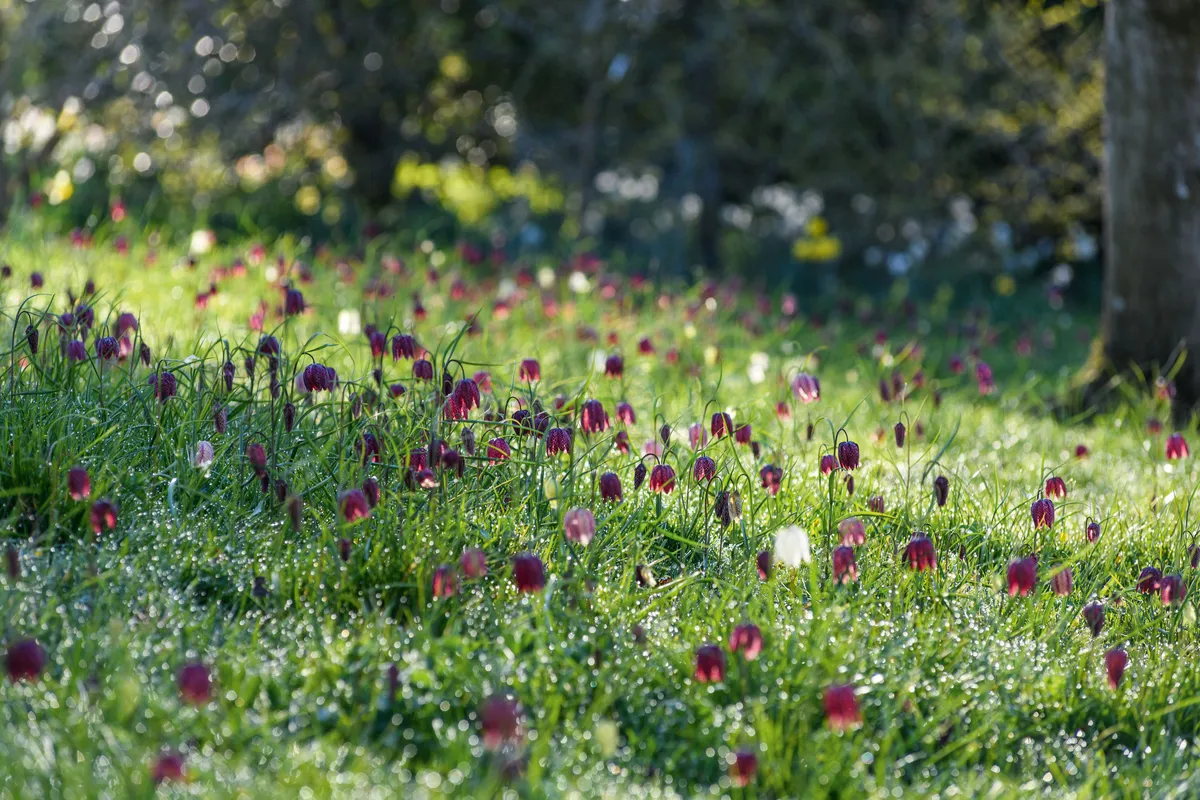
The snake’s head fritillaries (Fritillaria meleagris and Fritillaria meleagris var. unicolor subvar. alba) were added to the wildflower meadow in 1980 and are finally establishing after years of being decimated by pheasants. This area leads on to the pond garden which, with its relaxed, naturalistic plantings of hellebores, pulmonarias, rodgersias and gunneras, contrasts well with the more formal gardens elsewhere.
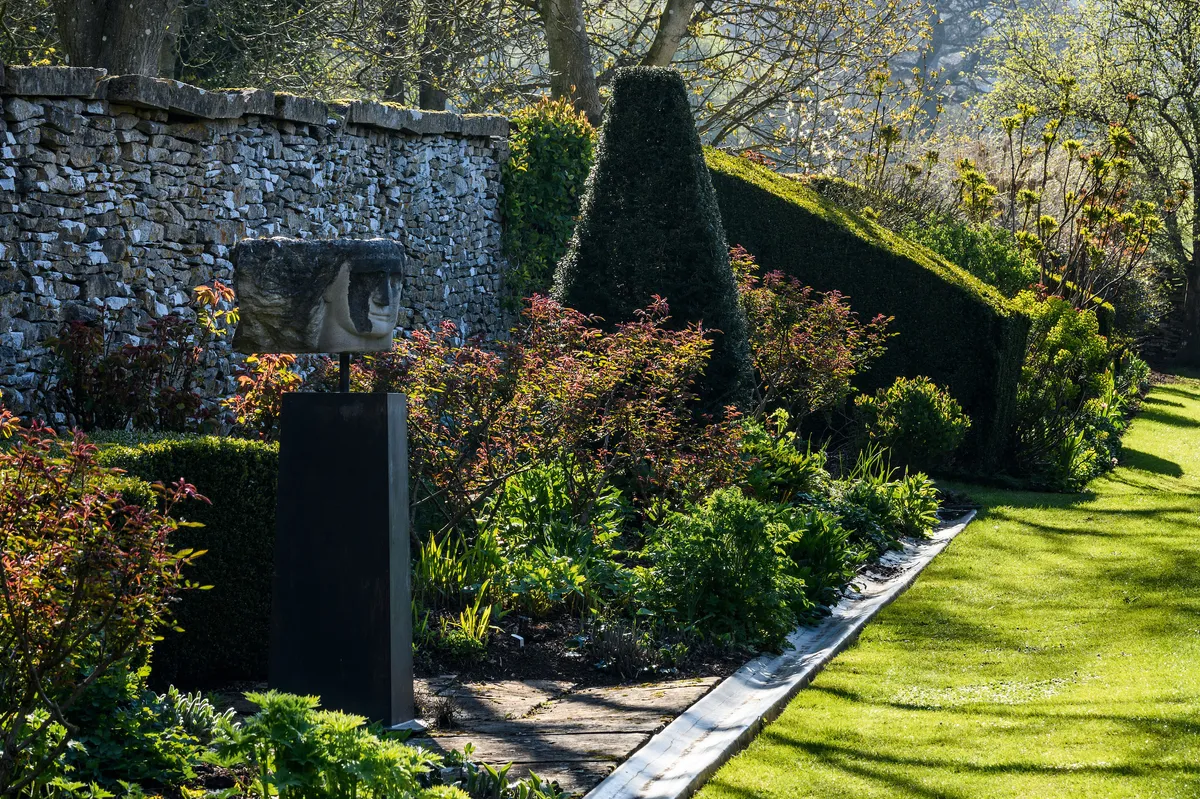
The Emily Young border, named after the sculptor of the work seen here, features a rill inspired by the one at Rousham, which Caroline considers “one of the greatest gardens in the country”. Divided by buttresses of yew, the planting areas feature roses, euphorbias and a wonderful white tree peony, Paeonia x suffruticosa ‘Tsuki-gekai’.
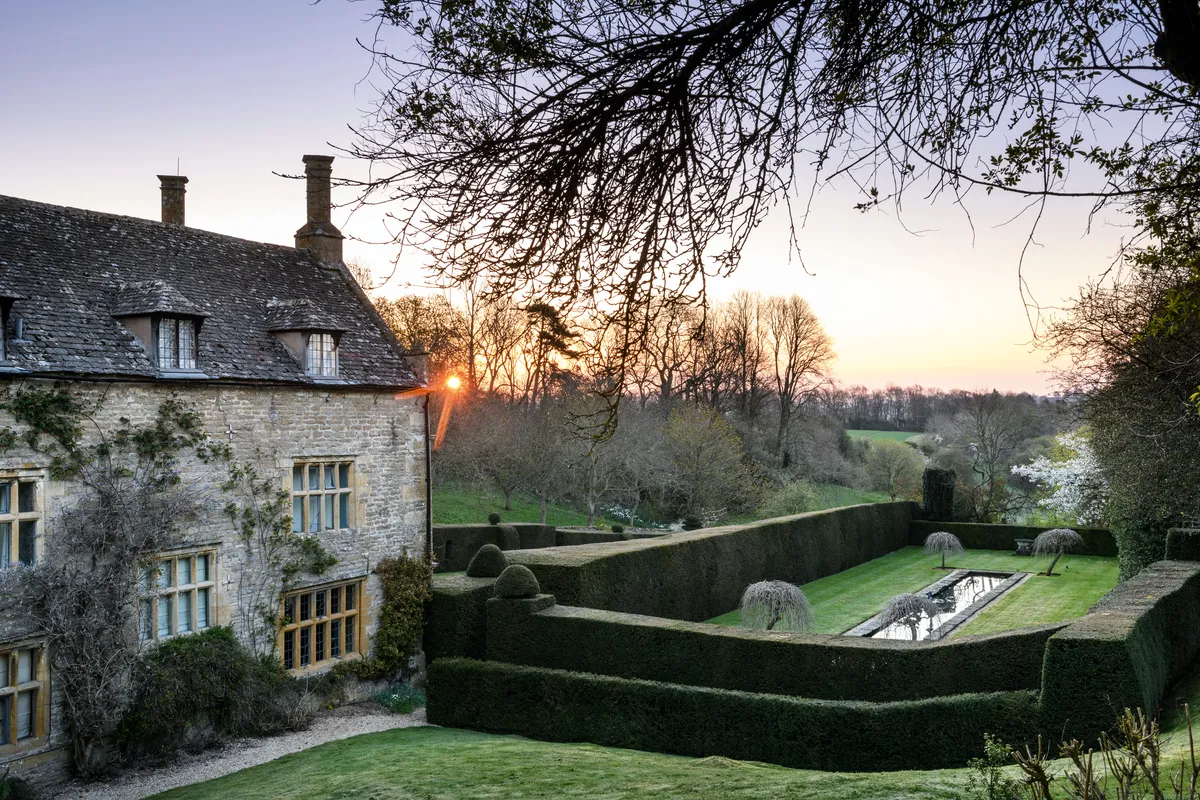
The tranquil canal garden was designed in 1995 by water garden designer Anthony Archer-Wills and occupies – and cleverly disguises – a sloping bank to the south of the house. The sharp edges of the immaculately trimmed yew hedges contrast well with the four weeping white mulberry trees (Morus alba ‘Pendula’).
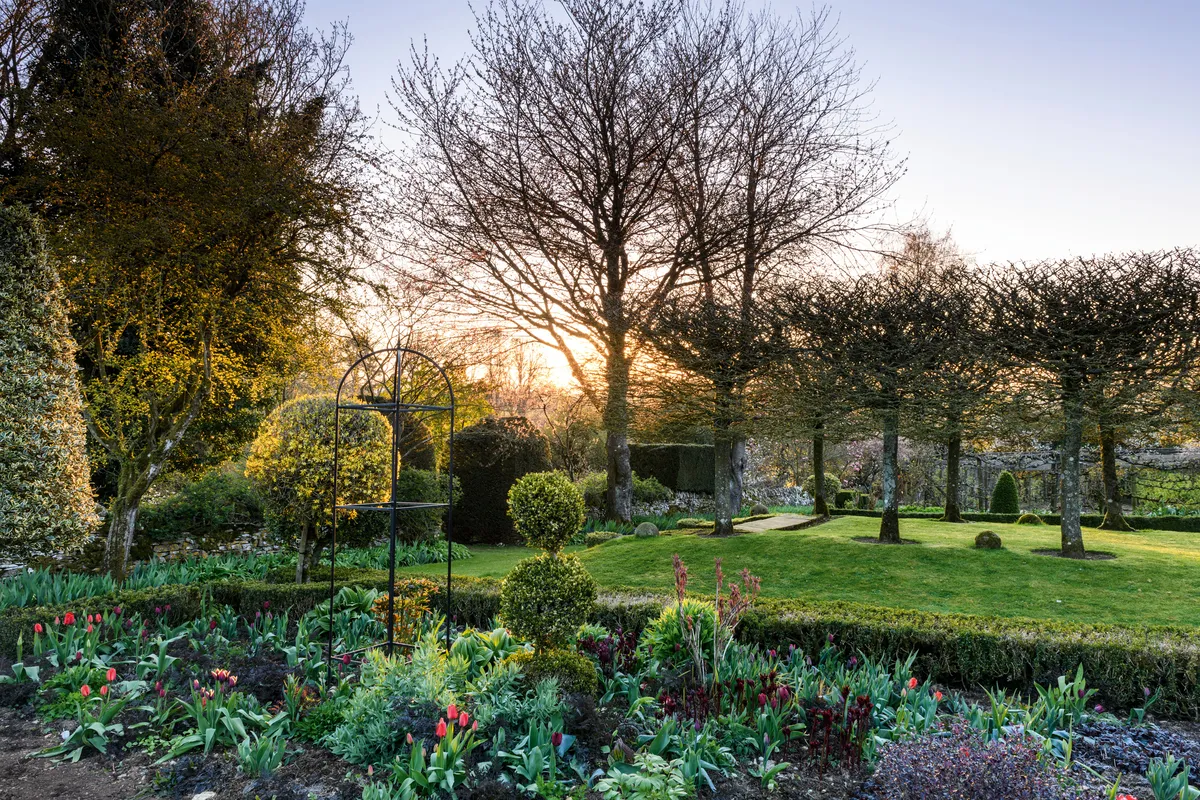
Seen in the foreground, the red and black border is situated at one of the highest points in the garden. In spring, its colour comes from tulips (including Tulipa ‘Queen of Night’ and T. ‘Ronaldo’) and the burgundy shoots of Paeonia x suffruticosa, while later in the year, crocosmias and dahlias take their place.
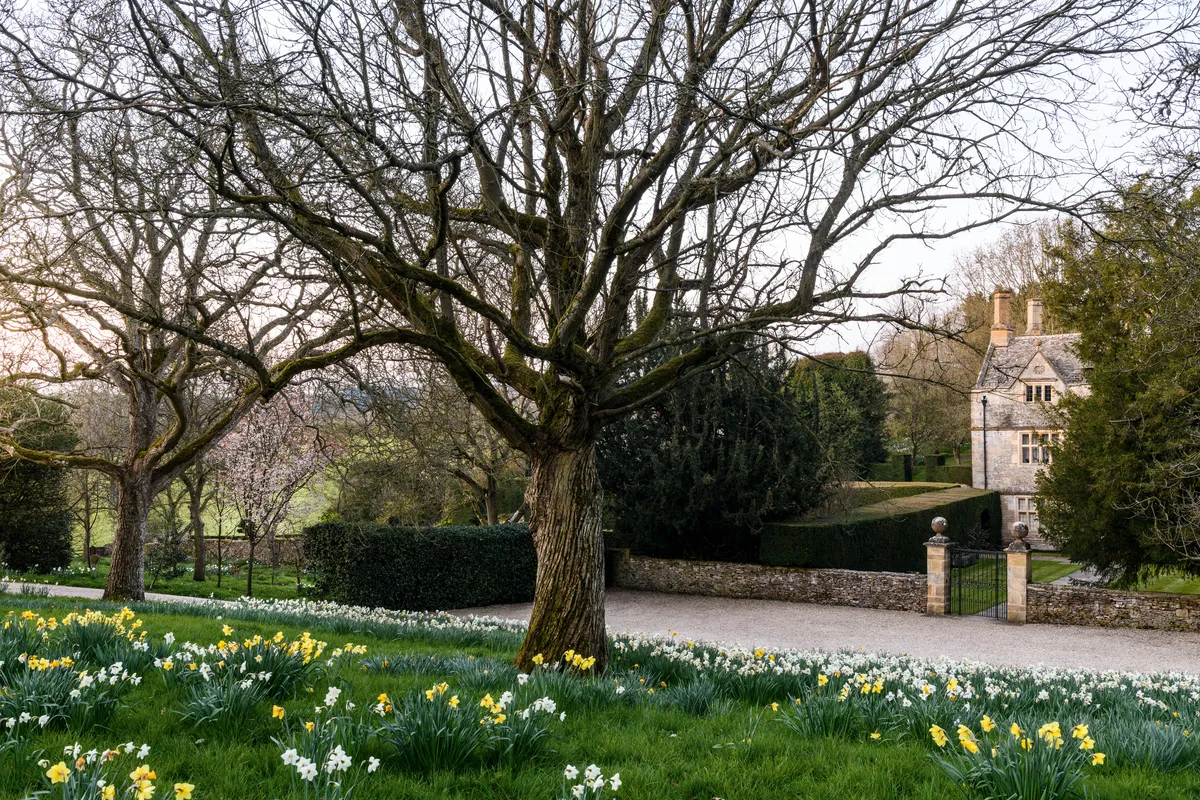
In spring, the wildflower meadow bank in front of the house is a mass of naturalised daffodils including the white Narcissus ‘Mount Hood’ and the yellow Narcissus ‘King Alfred’. The trees, two Juglans regia, were planted in 1976, while the large yew tree beyond the hedge was one of the few existing trees when the Bonds arrived.
USEFUL INFORMATION Address Northwick Estate, Upton Wold, Moreton-in-Marsh, Gloucestershire GL56 9TR. Web uptonwold.co.uk Open 10 April, 10am-5pm for National Garden Scheme, £14. Wednesdays and Thursdays, 10am-4pm, from April to October, and by appointment on other days.
